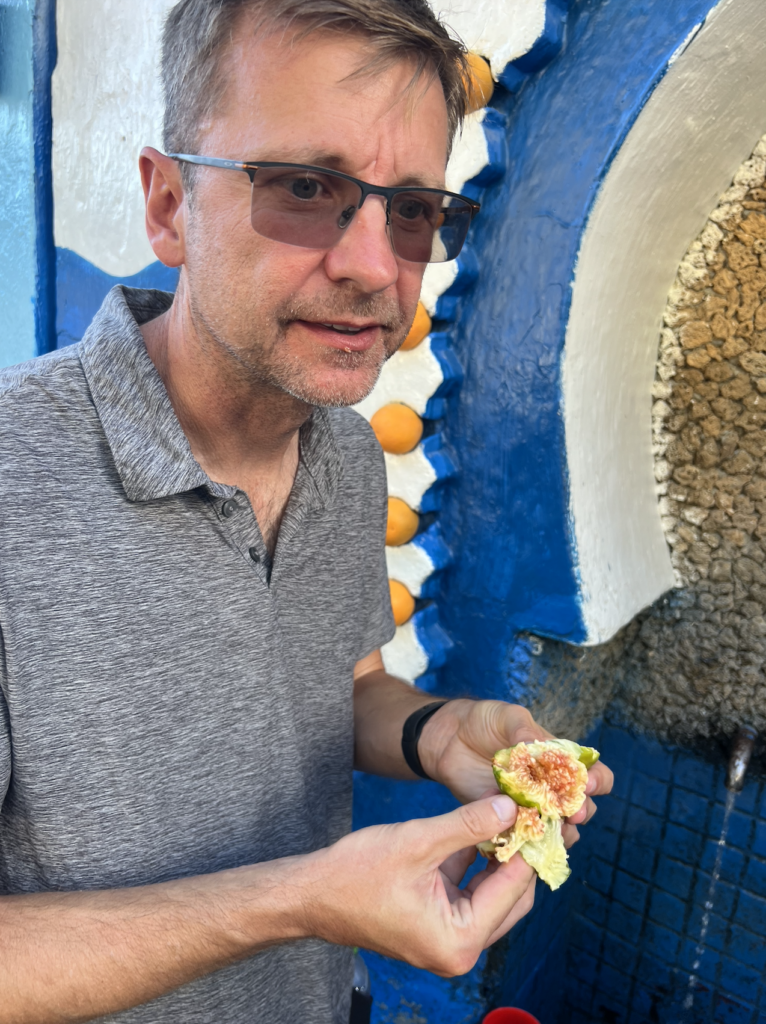Today’s adventures took us on a journey to see the ancient ruins of Volubilis and the enchanting blue alleys of Chefchaouen.
Our first stop was the archaeological site of Volubilis, founded in the third century BC as the capital of the ancient kingdom of Mauretania. Annexed by the Romans in AD 45, Volubilis flourished under Roman rule. Our guide, Majid, brought the ruins to life with his vivid descriptions. We marveled at the striking remains of the 2nd century forum, the basilica, the triumphal arch, and the townhouses with their extraordinarily well-preserved and colorful mosaics. The site also featured baths, olive oil presses, bakeries, aqueducts, and many other interesting remains.
In the afternoon, we arrived in Chefchaouen, the famed ‘blue city’. Emad, our local guide, led us through the picturesque blue alleyways, sharing fascinating insights into the city’s origins and history. Chefchaouen, nestled between two mountains (ech-Chaoua, meaning ‘horns’), was founded in 1471 by descendants of Mohammed as a stronghold against the Portuguese. Chefchaouen’s distinctive blue color dates back to the 1930s when Jewish refugees, fleeing Hitler’s reach, arrived. They painted the town blue, a color symbolizing the sky, the heavens, and God’s power. The Wadi Laou river, flowing through the city, provides crystal clear mountain water and serves as a gathering spot for locals and a retreat for children from the heat.
We ended our day in another beautiful Riad (check out my Instagram for photos) and enjoyed a lovely dinner in a quaint rooftop setting, basking in the charm of this magical city.

archaeological site of Volubilis












overloaded with straw bales?

our quick stopping point for lunch

this time with our host Chahine 🙂





lined many of the streets




two mountains (horns)

the center of town



15th-century kasbah with its crenellated red earth walls






